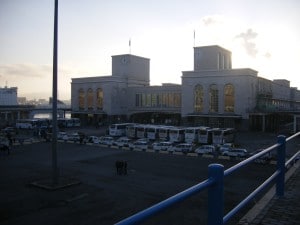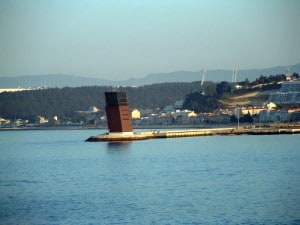 Captain Albert Schoonderbeek
Captain Albert Schoonderbeek
The distance between Naples and Elba is just too long to have an early morning arrival and so we were scheduled to be there at 10 am. That is a decent time anyway. Time for a leisurely breakfast on board, followed by a nice stroll into town. Having the best of both worlds. It was indeed a beautiful day and when we approached the island from the West, the sun beamed its rays over the green hills of Elba. We approached from the West as the entrance from the East side is a bit tight. Although there is enough water, it has several death angles (e.g. you cannot see around the corner) and if suddenly a fisherman comes in the way there would be nowhere to go but to put on the breaks very hard. Engineers do not like that very much so I prefer to go through wide open waters if the ship has a high average speed to maintain.
By 0850 we were at the pilot station and a very happy pilot came on board. We were his only job for the day and so he was bringing some money home that day. We were directed to the middle of the anchorage just in view of the harbour. There was a pier available but it was just too short for the Prinsendam to fit at. Next time when we come back it should be ok as they going to extend this pier during the coming winter. However as mentioned yesterday, the tender run into the port is very scenic and gives a nice overview of this most charming Italian town.


